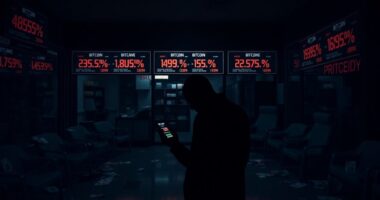You might find it concerning that Stronghold Digital Mining is facing a $1.4 million settlement due to violations linked to PJM rules. The company diverted power meant for market sales to Bitcoin mining, raising questions about compliance and regulatory oversight in the sector. As they return a significant amount in capacity revenues, it's clear that challenges are mounting. What does this mean for the future of cryptocurrency mining and its regulatory landscape?

When Stronghold Digital Mining failed to comply with PJM Interconnection market rules, it led to a significant settlement of about $1.4 million approved by the Federal Energy Regulatory Commission (FERC). This amount reflects the penalties imposed for violations concerning capacity offerings and misclassification of electricity usage. You might find it interesting that these infractions stemmed from Stronghold and its subsidiary Scrubgrass Reclamation not adequately offering their available capacity into the PJM market, which is crucial for maintaining market integrity.
The violations were serious; the Scrubgrass plant didn't provide its capacity in a substantial number of day-ahead and real-time hours. Instead, the electricity that should've been offered to the market was diverted for Bitcoin mining activities. To complicate matters, some power was incorrectly categorized when purchased from PJM, which further muddied the waters. As part of the settlement, Stronghold must return $678,635 in capacity revenues to PJM, indicating a significant oversight in their market operations. Additionally, a recent settlement involving GAW Miners LLC highlights the ongoing issues related to compliance in the cryptocurrency sector.
Stronghold's business model relies heavily on its power plants, like Scrubgrass and Panther Creek, which utilize waste coal for energy. This setup allows the company to profit from either mining Bitcoin or selling power into wholesale markets, depending on which option proves more lucrative.
It's essential to note that while the company is currently facing penalties, it's also looking toward the future. Stronghold is in the process of being acquired by Bitfarms, which plans to expand its mining operations significantly.
To enhance its compliance and market participation, Stronghold is collaborating with Voltus. This partnership aims to improve its involvement in demand response programs, which could help prevent future violations and bolster its operations in the competitive Bitcoin mining landscape. Regulators like FERC play a critical role in enforcing market rules, ensuring that companies adhere to fair practices, which ultimately protects consumers and stabilizes the industry.
Settlements like this one can set a precedent within the Bitcoin mining sector, emphasizing the importance of regulatory compliance. By addressing these violations, Stronghold not only faces financial consequences but also navigates the complexities of operating within a highly regulated industry.
As they move forward, you can expect to see how this settlement influences their practices and the broader industry standards in energy and cryptocurrency.









